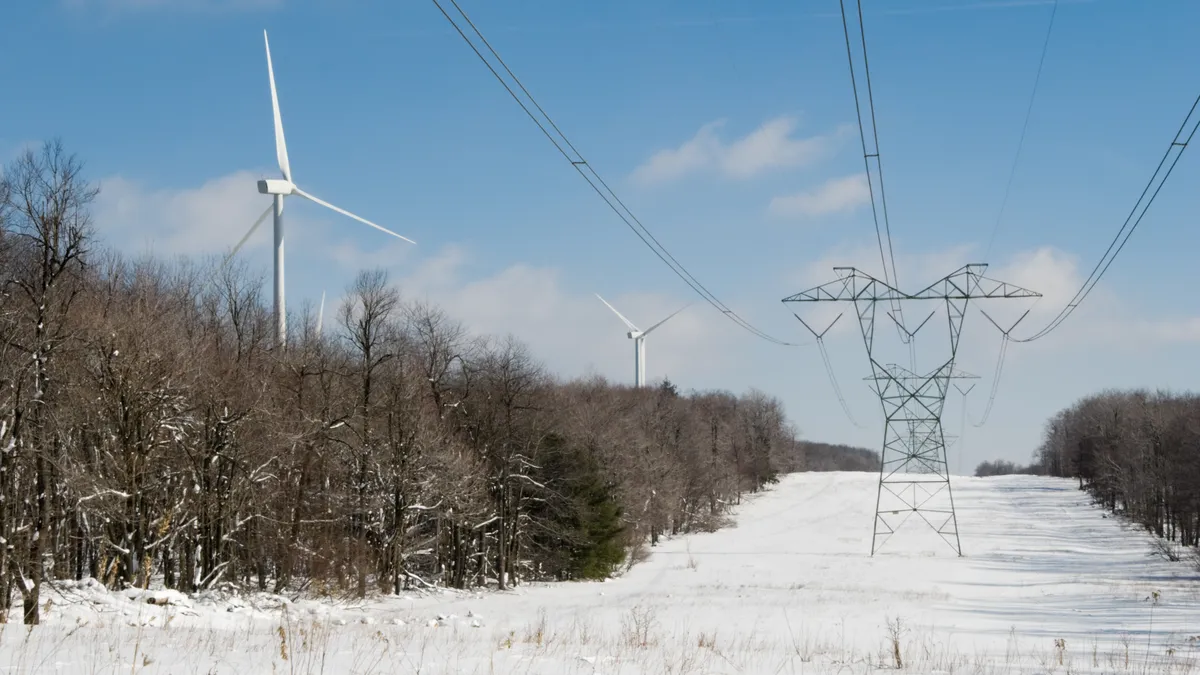Transmission constraints in the Midcontinent Independent System Operator and Southwest Power Pool cost at least $2.2 billion in 2022, reflecting rising gas prices and growing wind curtailment, according to a National Bureau of Economic Research working paper released Monday.
Without the constraints, Entergy Arkansas and Entergy Louisiana would have had $930 million less in operating profits in 2022, Catherine Hausman, an associate professor at the University of Michigan’s Gerald R. Ford School of Public Policy, said in the paper.
Four unnamed power plant owners in Iowa, Illinois and Missouri would have seen their operating profits increase by about $1 billion and wind generators overall would have had an $800 million bump in operating profit, according to Hausman’s modeling.
“There are many tactics an incumbent firm might use to protect its generation assets … and the financial incentives to do so can be tremendous,” Hausman said in the paper Power Flows: Transmission Lines and Corporate Profits. The paper’s findings “suggest that the current [transmission] planning process is problematic given the fact that market integration is expected to bring very large losses to some incumbents.”
In the paper, Hausman looks at how transmission constraints affect the profits of individual firms in MISO and SPP, a topic that hadn’t been previously studied by researchers.
“It’s straightforward that firms act in their own best interest and so I wanted to figure out what their interests are in this case,” Hausman said in an interview.
Transmission constraints in MISO and SPP have protected the owners of fossil fuel power plants in load pockets from competitive pressure from low-cost wind generation, with firms in MISO South, an area covering parts of Arkansas, Louisiana, Mississippi and Texas, standing to lose the most from increased market integration, according to the paper.
Driven by increasing renewable energy curtailments and increasing natural gas prices, transmission and curtailment-related inefficiencies have been rising over time in the MISO and SPP markets, which cover the central United States, Hausman said in the paper.
In the two grid operator footprints, constraints or curtailments added $2.16 billion in costs in 2022, up from $980 million the year earlier, and from a range of $320 million to $430 million from 2016 through 2020, according to Hausman’s modeling.
In 2022, constraints within MISO accounted for $1.1 billion, or half, of the total costs, wind curtailments made up $640 million in costs, constraints between MISO and SPP added $210 million in costs, and constraints within SPP contributed $190 million in costs, according to the paper.
The incentives for incumbent generators to block new transmission lines are increasing as new renewables enter the market, Hausman said. “Integrating the market implies that those low-cost renewables can be exported to other regions, which can both displace fossil generation and also lower market prices for the remaining fossil generation,” she said.
Generating units in northern and central MISO and southwestern SPP stand to gain the most from reduced transmission congestion, and according to Hausman, plants in MISO South would lose the most.
“Generation firms operating in southern MISO have no incentive to develop new transmission lines that better integrate their power plants with the rest of the SPP and MISO footprints,” Hausman said. “In fact, these firms have strong financial incentives to block new lines — an incentive that has grown as wind has entered SPP and the rest of MISO.”
Entergy, however, contends the cost-of-service regulatory framework its utilities operate in removes any incentive to block transmission projects.
“Entergy’s profits do not depend on how often its generators run,” Neal Kirby, a company spokesman, said in an email. “The revenues derived from operating Entergy’s plants are credited 100% to customers via the fuel rider on their bills. It is false and misleading to suggest that cheaper generation prices or reduced dispatch of its units hurts Entergy’s profits.”
Also, MISO has well established transmission study processes to identify cost-effective transmission projects, according to Kirby. “Congestion does occur [in MISO South], as it does in every energy market; however, the congestion that occurs in MISO South has not been sufficient to cost justify the construction of new transmission to alleviate it,” he said.
Generally, with reduced constraints, wind generations would have access to higher-priced power markets and would see reduced curtailments, Hausman said. They would also likely be able to build more wind farms if there was increased transmission capacity, she said.
The paper has implications for the energy transition, which is based on allowing market entry to new technologies and reshaping markets, according to Hausman.
“If you give veto power to incumbents, then of course that's going to slow down the process,” Hausman said. One of the important questions “is whether our governance procedures adequately weigh the interests of new low-carbon entrants and the interests of consumers and society at large or if the rules are in part being written by incumbents.”
Hausman’s paper suggests that a handful of companies have “huge incentives” to block transmission expansion, according to Ari Peskoe, director of the Harvard Law School’s Electricity Law Initiative.
The paper focused on two RTO regions, which structurally should be doing a better job planning transmission compared to non-RTO regions where utilities “are explicitly in control,” according to Peskoe.
“The fact that we have these huge inefficiencies and huge consumer costs in the RTO regions suggests that things may be even worse outside of the RTOs,” he said.
Also, incumbent utilities have opportunities to influence RTO, non-RTO and North American Electric Reliability Corp. processes that are opaque to the public, according to Peskoe.
The Federal Energy Regulatory Commission’s pending transmission planning and cost allocation rule may give states a larger role in the process, which could improve oversight, Peskoe said.






















